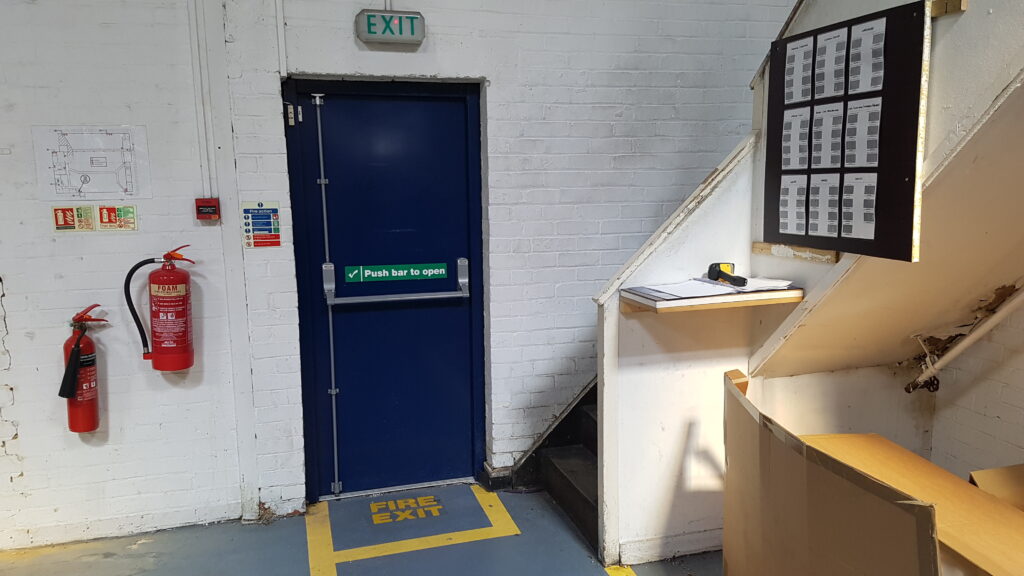A compartmentalised blueprint is the first step to adhering to fire safety specifications in England and Wales, as a proactive building layout essentially delays the spread of fire from one area of the building to the other. These compartments are typically connected by fire doors, which passively control the flow of traffic around the building. Constricting the amount of oxygen to a fire as well as resisting the heat of a fire for a set amount of time (depending on the type of fire door fitted), the two most important functions of fire doors are:
- Closed = barrier to prevent the spread of fire
- Open = allows a means of escape from the source
When are fire doors required in commercial property?
Under the Regulatory Reform (Fire Safety) Order 2005, all types of building owner have a legal duty to comply with fire safety in England and Wales. Covered by Article 17 and 18 of the Fire Safety Order, this question is not as straightforward as it appears because non-domestic dwellings have a wide range of uses, sizes and requirements. A site survey is the best place to start, where a qualified contractor can carry out a thorough fire risk assessment, address potential fire hazards and act accordingly.
When are fire doors required in residential property?
Landlords also have a legal duty of care to ensure that their tenants and properties are safe. HMO Landlords (Houses in Multiple Occupation) must install half hour (FD30) protective fire doors on all habitable rooms leading to a stairwell, complete with closers and intumescent strip seals. Building regulations for homeowners / single dwellings require fire doors to be installed in 2 storey houses with a door leading from a garage into a house and new build/improved domestic properties that have 3 or more storeys (including loft conversions) where fire doors must be fitted to every habitable room that comes off the stairwell. *Of course, these are all subject to changes within the law so please keep up-to-date via the links below.
Upgrading existing fire doors
It used to be normal practice to alter and improve the performance of an existing fire door, rather than replace it. However, it is now commonplace to fit completely new fire doors and door sets instead of revamping them; unless there is an obvious exception – e.g. a listed building. The main categories of regulatory fire door barriers are FD30 and FD60 fire doors, which provide up to 30 and 60 minutes of fire protective assurance.
Please be aware that fire safety laws in Scotland and Northern Ireland are slightly different to England & Wales, so please see:
Scotland – Practical Fire Safety Guidance for Existing Non-Residential Premises
Northern Ireland – Regulatory Reform (Fire Safety) Order 2005 and Fire Safety Regulations (NI) 2010
We also advise visiting the leading authority on fire door safety BWFcertifire for up-to-date information on fire door safety regulations, as well as Fire Door Safety Week for best practice guidelines.
Fire doors mean the difference between life & death
Supplying and fitting bespoke fire rated and fire exit doors for many years now, we’re able to offer these in high quality aluminium, uPVC and timber profiles. From large commercial window and door projects right through to smaller residential assignments, Hazlemere Commercial fully acknowledge that good fire door management is the key to enabling swift evacuation of premises in the safest way possible. Fire safety legislation can become quite baffling and complicated, so for more information call 01494 897 600 or send us a message online.

